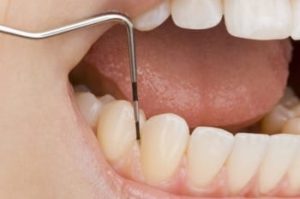 The answer to this common dental cleaning question depends on you—specifically your mouth. Your dentist can give tell you the kind of teeth cleaning you need after an examination. His or her answer is dependent upon the state of your gums, and whether you have any signs of gingivitis or gum disease, also commonly called periodontal disease.
The answer to this common dental cleaning question depends on you—specifically your mouth. Your dentist can give tell you the kind of teeth cleaning you need after an examination. His or her answer is dependent upon the state of your gums, and whether you have any signs of gingivitis or gum disease, also commonly called periodontal disease.
While many people think a dental cleaning is a dental cleaning, the answer to this frequent question is much more complicated.
Regular preventative dental cleaning. A regular cleaning, or prophylaxis, is commonly recommended by dentists for patients who have healthy, pink gums. These patients are not exhibiting any signs of gingivitis, gum disease or bone loss. A preventative dental cleaning removes plaque and tarter around the teeth and gum line, especially in hard to reach places. Usually, your dental benefits cover bi-annual regular dental cleanings as a preventative measure to keep your teeth and gums healthy.
Root planing and scaling. The next level of dental cleaning cleans your teeth even below the gum line. Root planing and scaling cleans your mouth down to the roots, and is typically used as a first effort to treat gum and bone disease. During root planing and scaling, plaque, tarter, bacteria and diseased deposits are removed from the patient’s mouth.
Periodontal maintenance. This term refers to a series of deep cleanings and dental therapies used to keep your periodontal disease in check. These visits are scheduled as often as every three months, giving you and your dentist the opportunity to discuss the progression of your periodontal disease, clean out any bacteria, tarter or plaque, and keep the symptoms of your gum disease at bay. Keeping your periodontal maintenance appointments is essential to prevent tooth loss, sustain bone structure, remove diseased tissue and maintain the health of your gums.
If you have any questions about the type of teeth cleaning you may have, schedule an appointment or contact us with any follow-up questions you may have.





